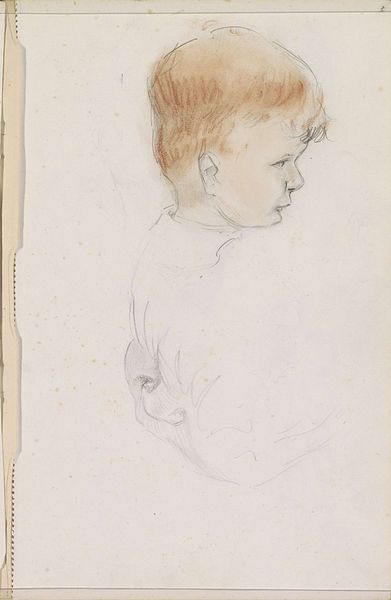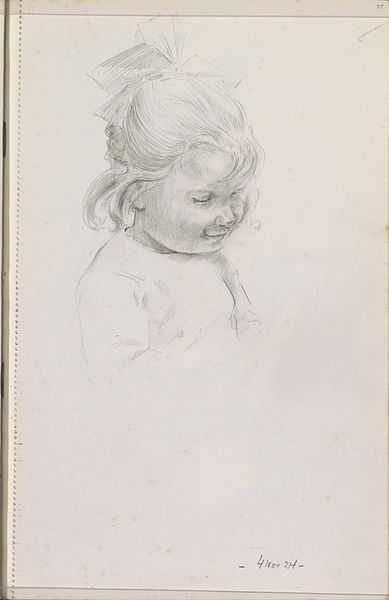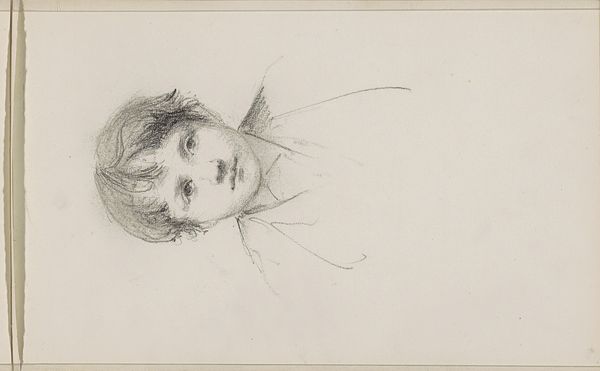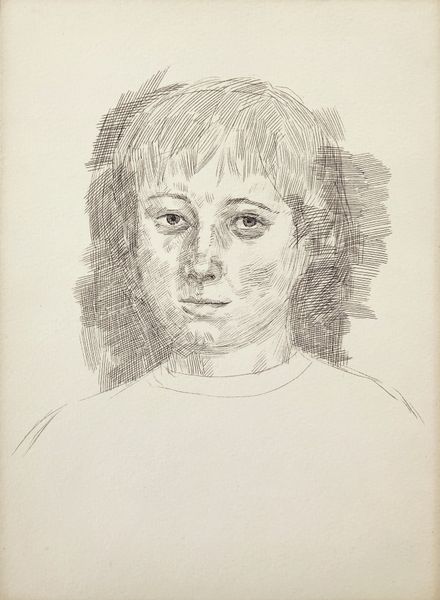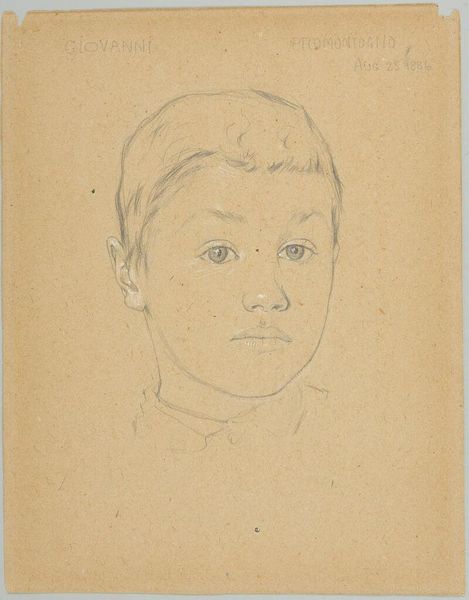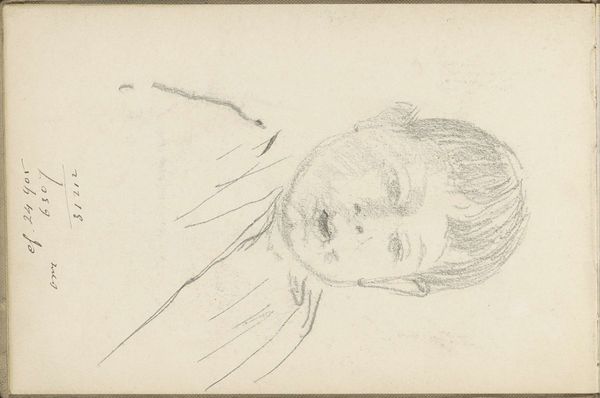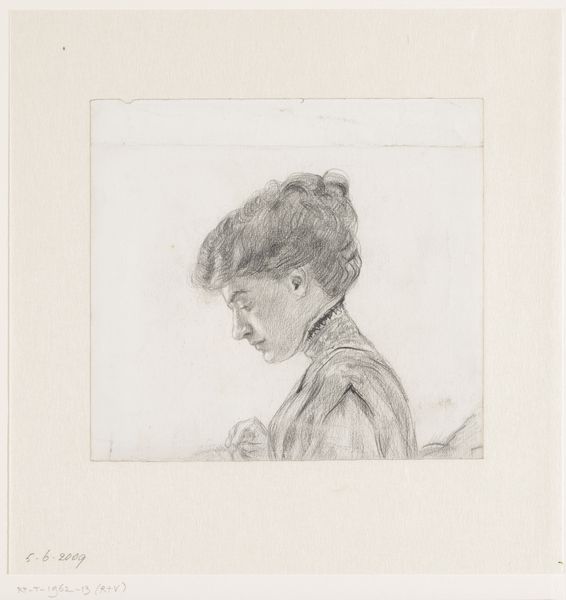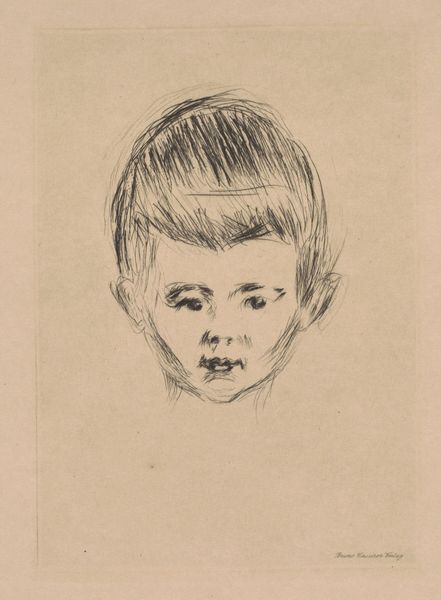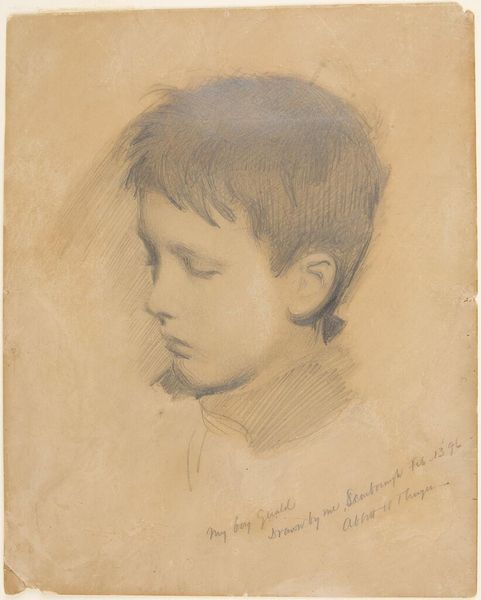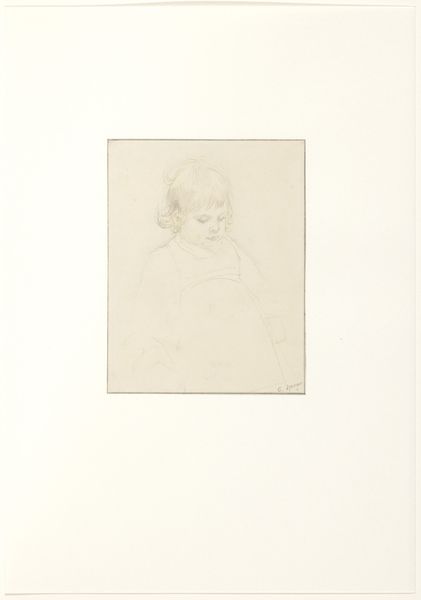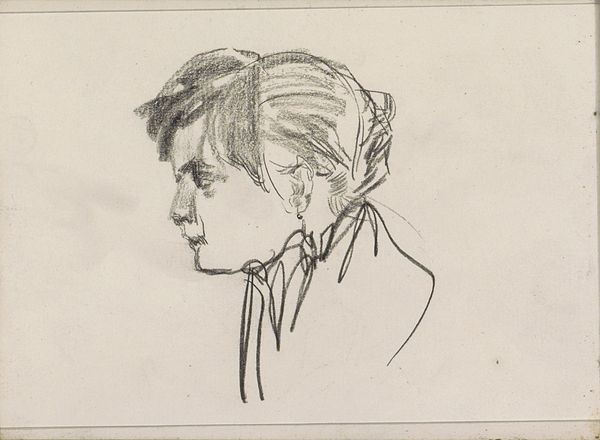
drawing, pencil
#
portrait
#
drawing
#
pencil sketch
#
figuration
#
pencil
#
realism
Copyright: Rijks Museum: Open Domain
Curator: Welcome. Before us is "Head of a Boy," a pencil drawing made circa 1922 to 1925 by Otto Verhagen. Editor: There’s a certain melancholic intimacy to it, wouldn't you agree? The boy's averted gaze... it speaks volumes, even without a clear context. Curator: Indeed. Observe the artist's expert handling of chiaroscuro—the stark contrast between light and shadow. See how Verhagen uses dense, almost scribbled lines to model the boy's hair, contrasting it with the delicate, softer shading around his face. Editor: It’s the timeless archetype of the innocent, vulnerable child, so poignantly captured. The profile is rendered with simple lines, yet evokes so much; he seems lost in his own thoughts, which makes him symbolic of childhood itself. Curator: Notice, too, how the composition isolates the boy’s head and shoulders. The negative space accentuates the delicate curvature of the boy's features. One can deduce that Verhagen wished to emphasize form, structure and tone as essential building blocks of artistic expression. Editor: Absolutely. He mirrors centuries of depictions—think of the Renaissance portraits of saints—except, in his drawing, we replace sanctity with the vulnerability of youth. It’s quite moving. Curator: Consider the materiality too, it is "just" a humble pencil on paper, elevated through careful study of contrast and light, transcending the everyday. Editor: What resonates most is the feeling it evokes - a silent narrative captured in a fleeting moment. It invites us to remember what it feels like to be young, full of introspection and vulnerability. Curator: In essence, this deceptively simple drawing reveals complex strategies of representation—of line, shadow, and form that achieve resonance beyond the figurative alone. Editor: Exactly, beyond the pure artistry, it gives us a powerful sense of cultural and personal nostalgia.
Comments
No comments
Be the first to comment and join the conversation on the ultimate creative platform.
